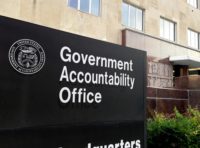A new report from the Government Accountability Office highlights numerous duplicated programs within federal agencies, including surface transportation and U.S.-Mexico border-region water infrastructure.
The report, released on Feb. 28, was requested by Sen. Tom Coburn (R-Okla.), who attached an amendment to last year’s debt-limit vote directing GAO to conduct an annual review of redundant federal programs.
Coburn says the new report will be helpful as Congress debates budget and appropriations measures. He says, “GAO has identified a mother lode of government waste and duplication that should keep Congress busy for the rest of the year.”
In the introduction to the report, Comptroller General Gene Dodaro concludes, “In some cases, there is sufficient information available today to show that if actions are taken to address individual issues summarized in this report, financial benefits ranging from the tens of millions to several billions of dollars annually may be realized by addressing that single issue.”
For example, the GAO report says the nation’s transportation system is fragmented and “has not evolved to reflect current priorities” in planning. At present, five federal agencies with 6,000 employees run 100 different transportation programs, GAO says.
Jeff Shoaf, the Associated General Contractors’ senior executive director for government affairs, says, “[The study] reinforces what people already knew.” The National Surface Transportation Infrastructure Financing Commission came to similar conclusions in its February 2009 report, he says. Shoaf adds, “I think getting rid of duplicative federal requirements makes an awful lot of sense.”
In a report released in 2008, another panel, the National Surface Transportation Policy and Revenue Study Commission, recommended cutting 108 federal surface transportation programs to just 10.
The Obama administration’s proposed outline for a new multiyear transportation bill doesn’t go that far, but it would combine about 55 current highway programs into five and consolidate five transit programs into two.



